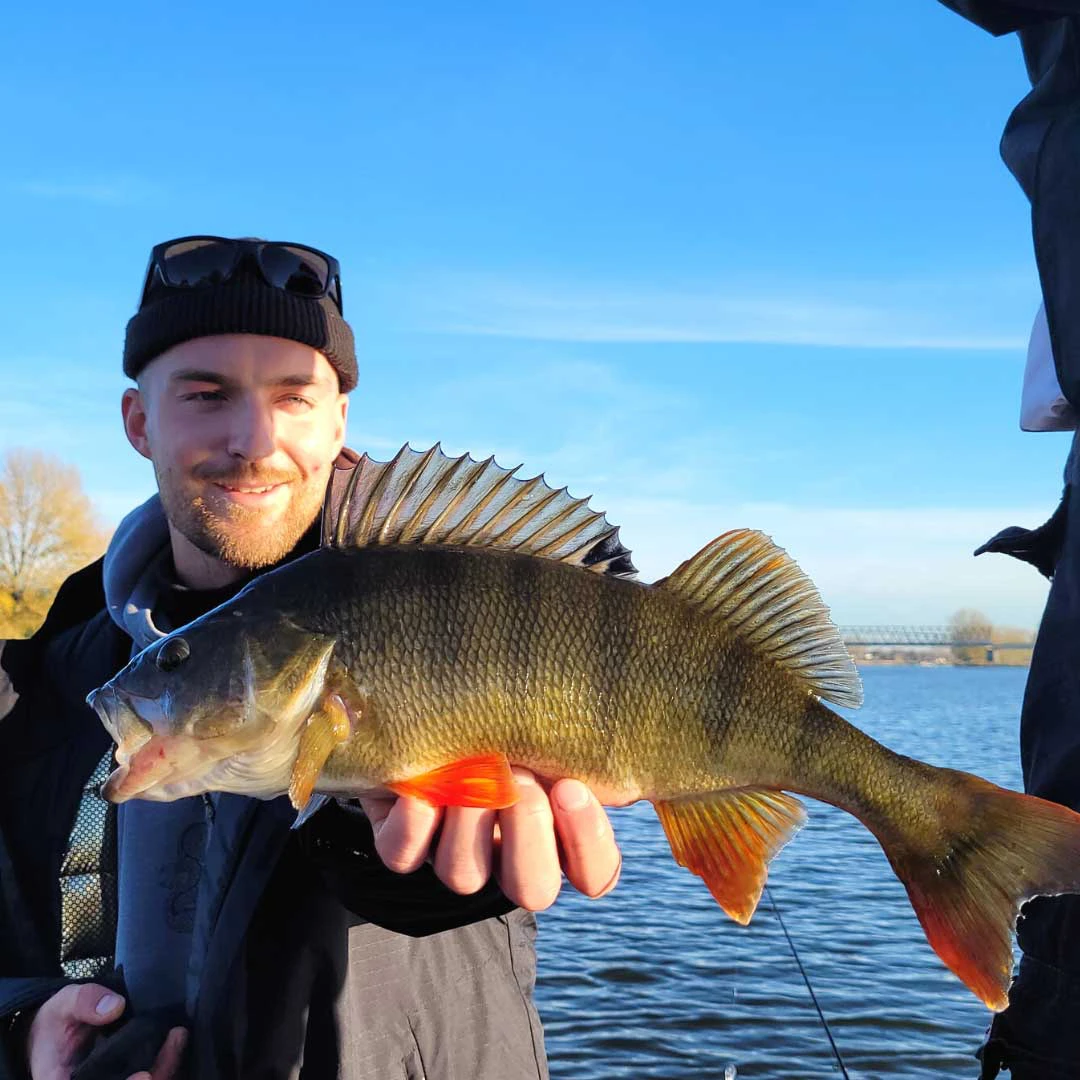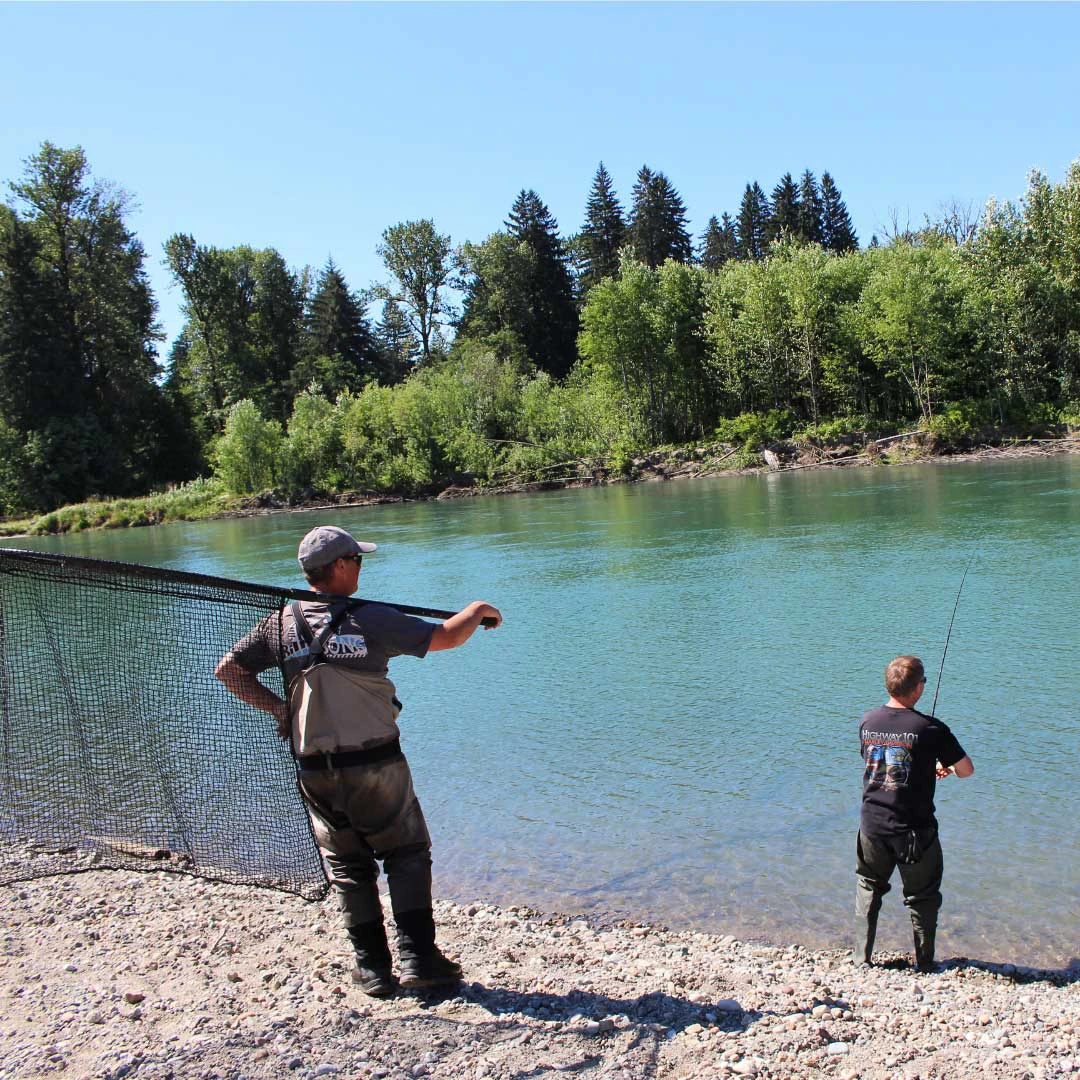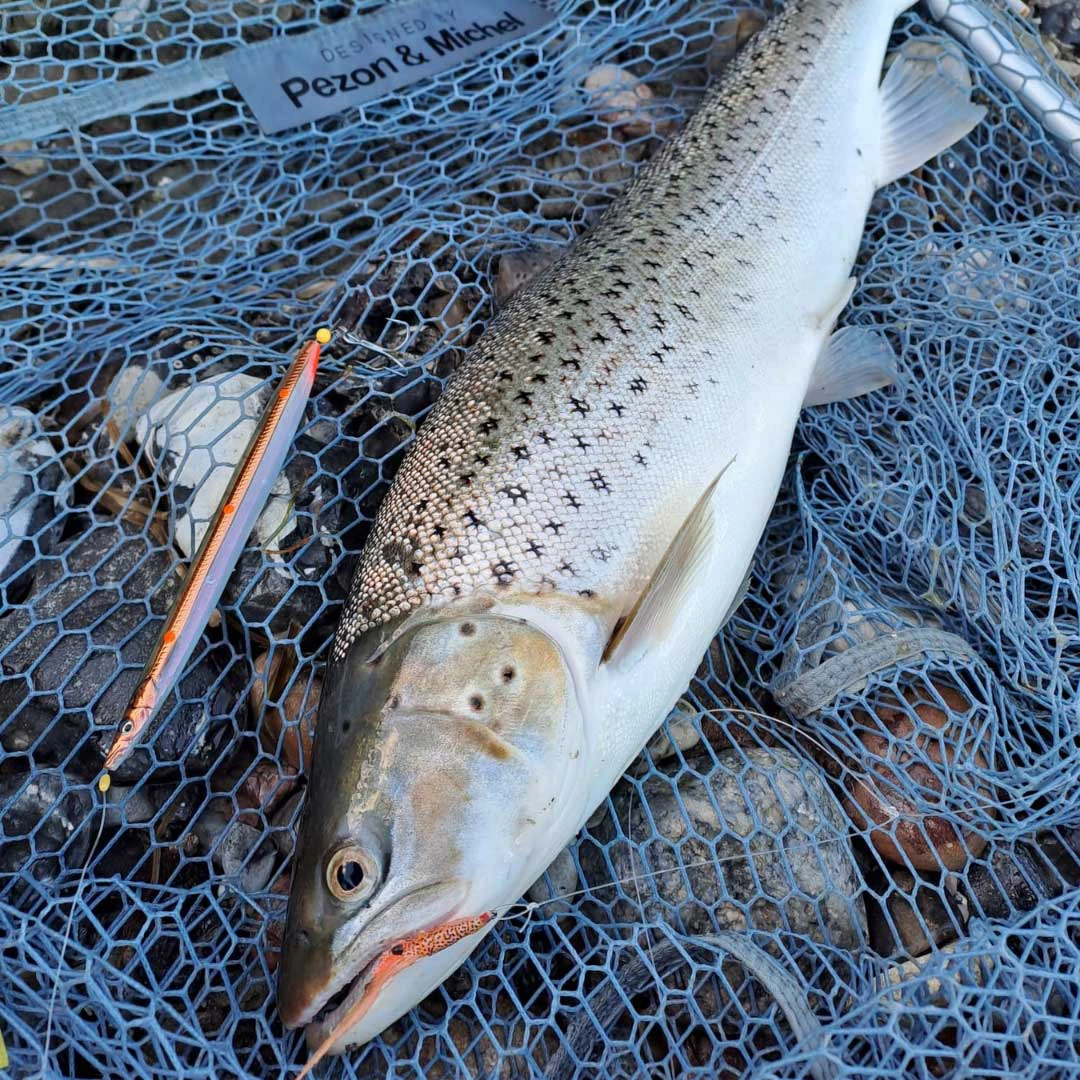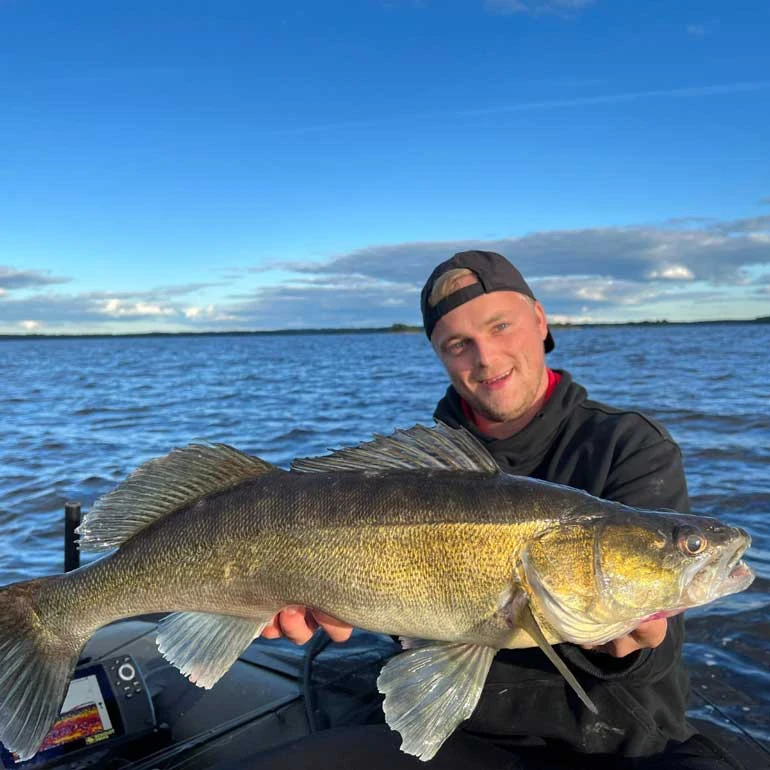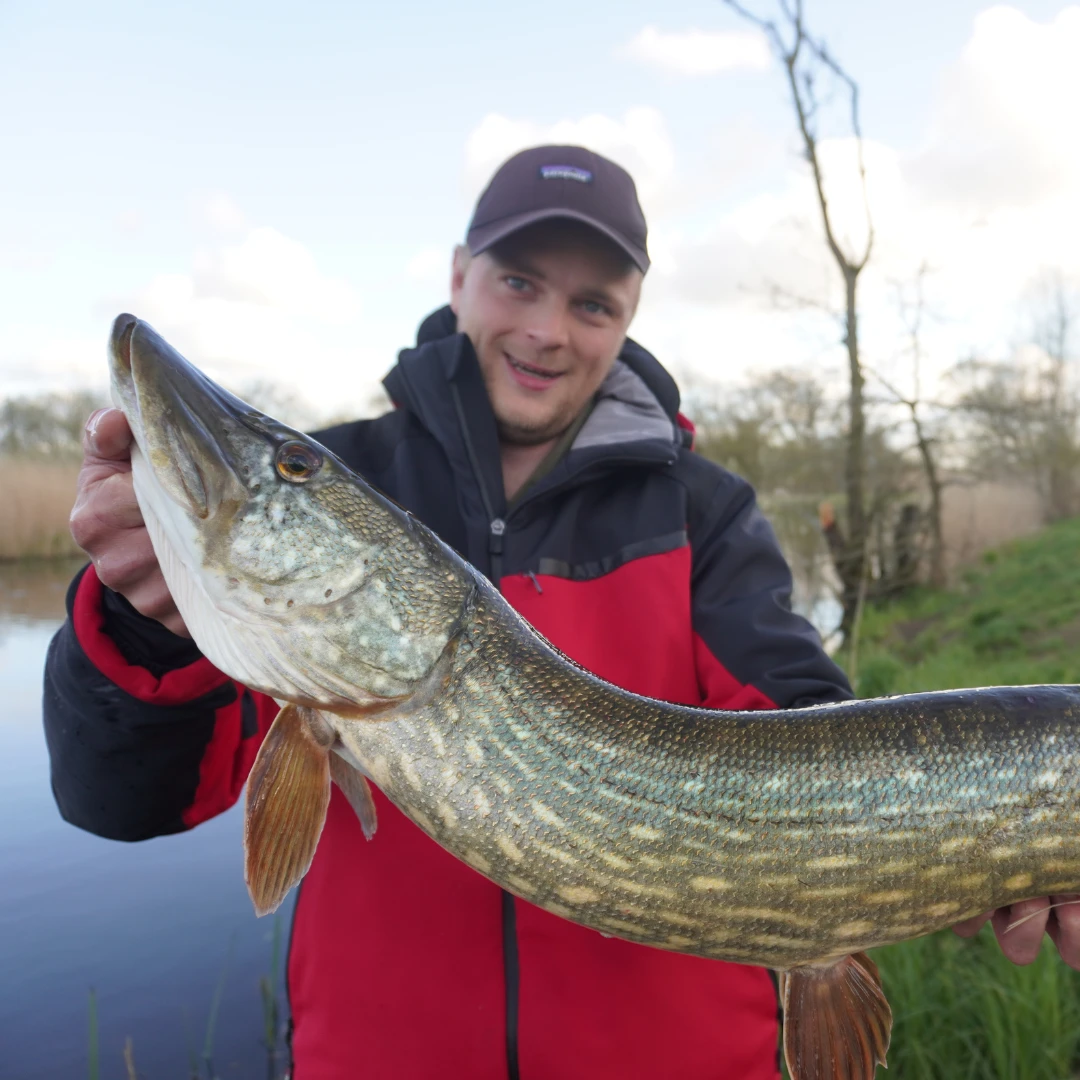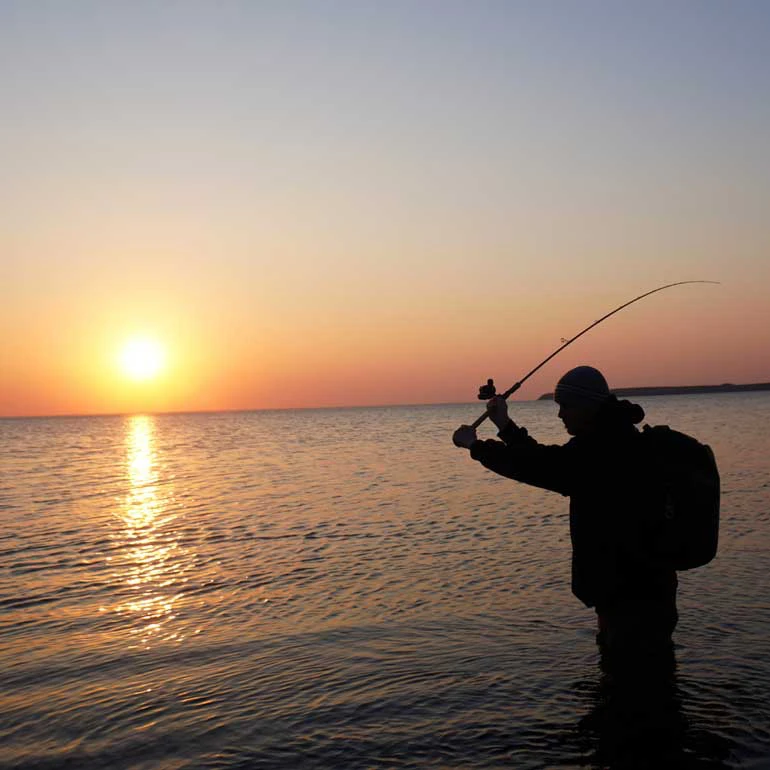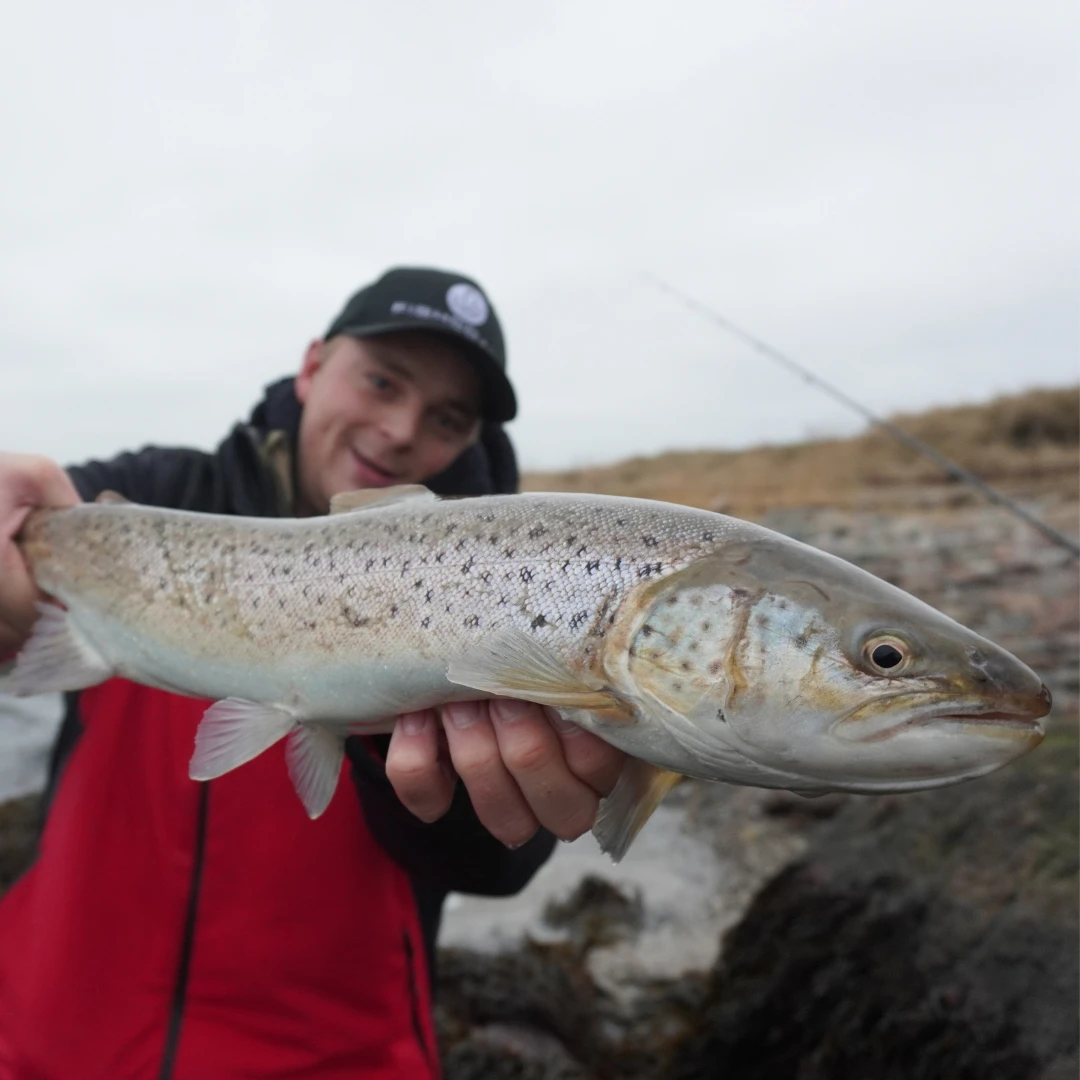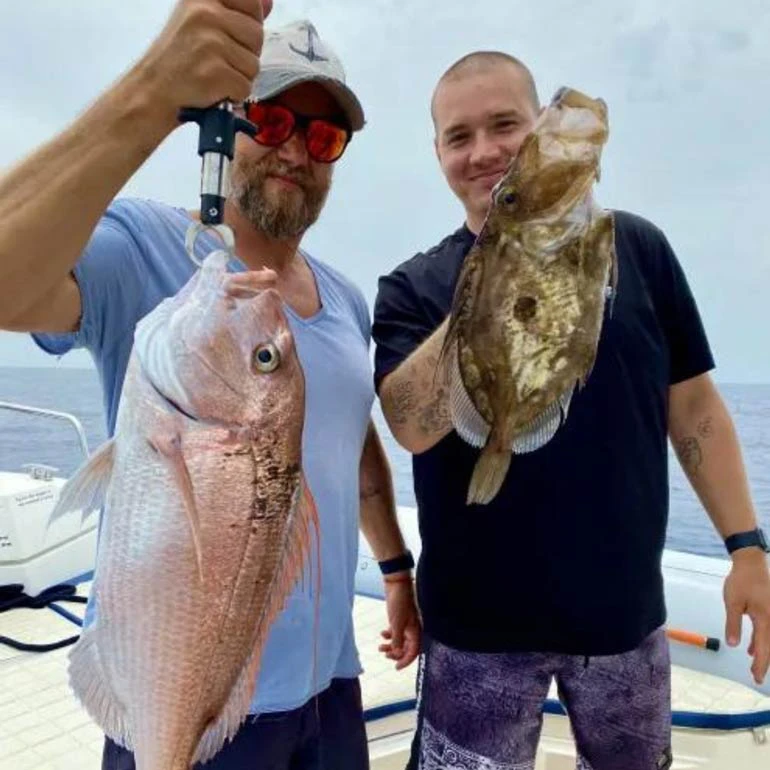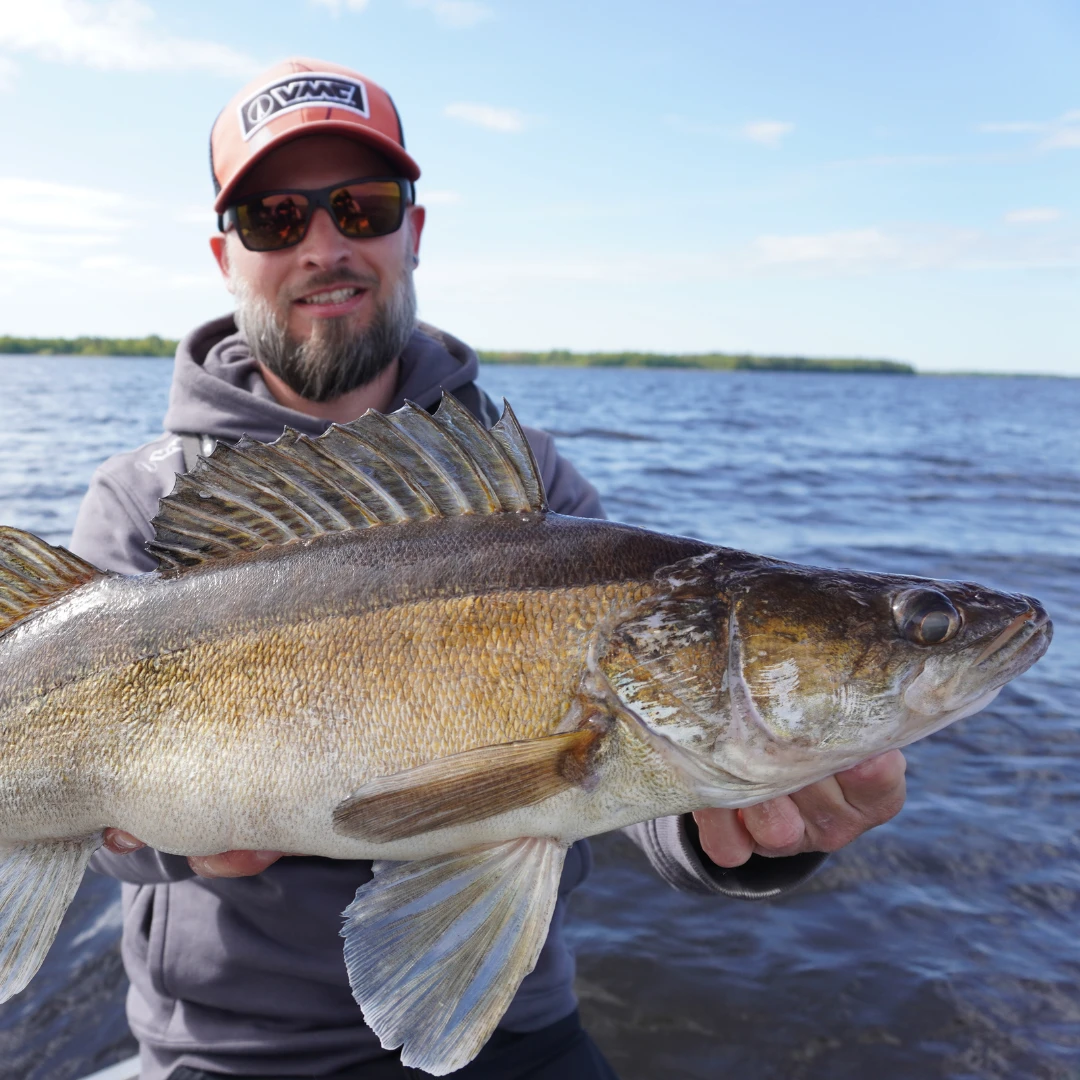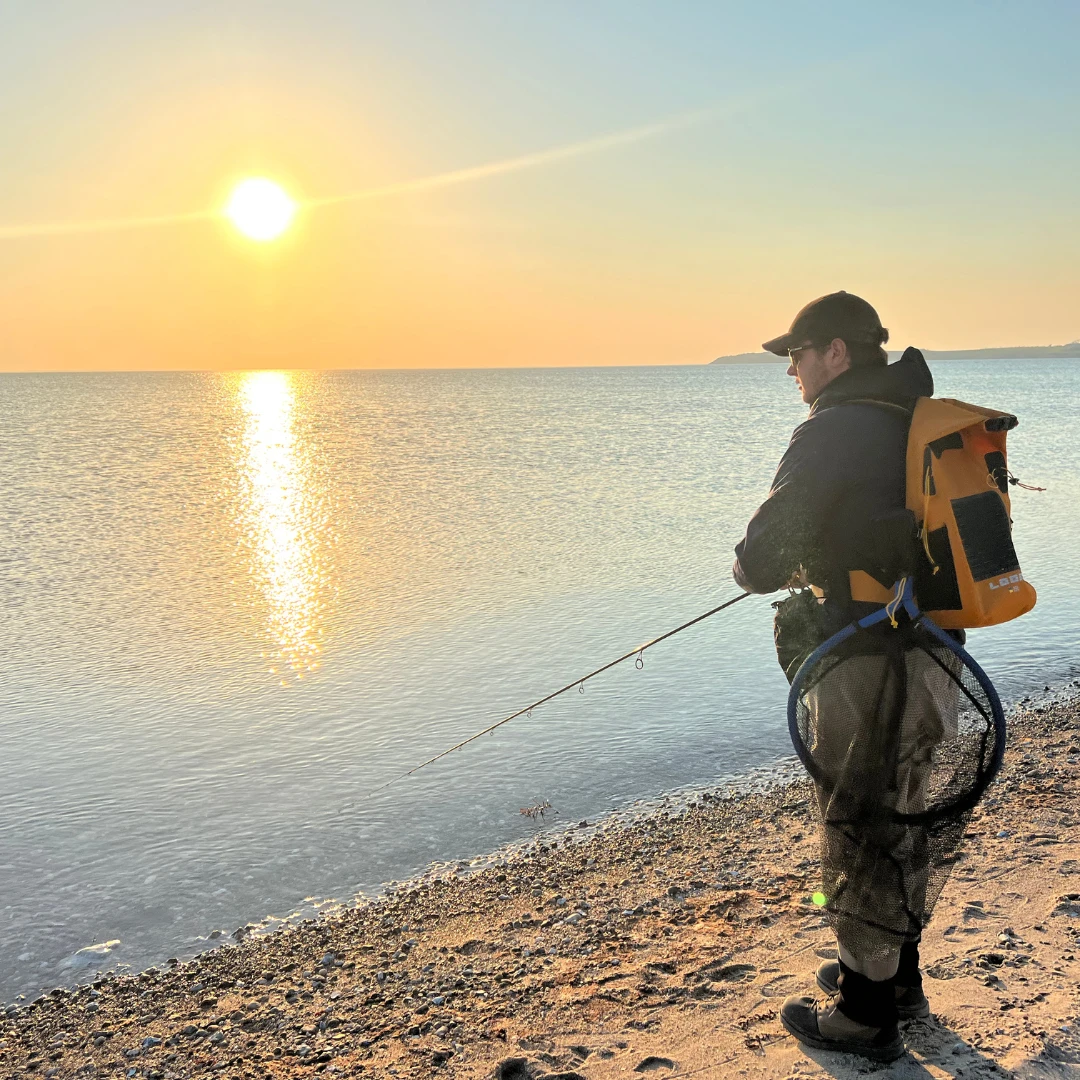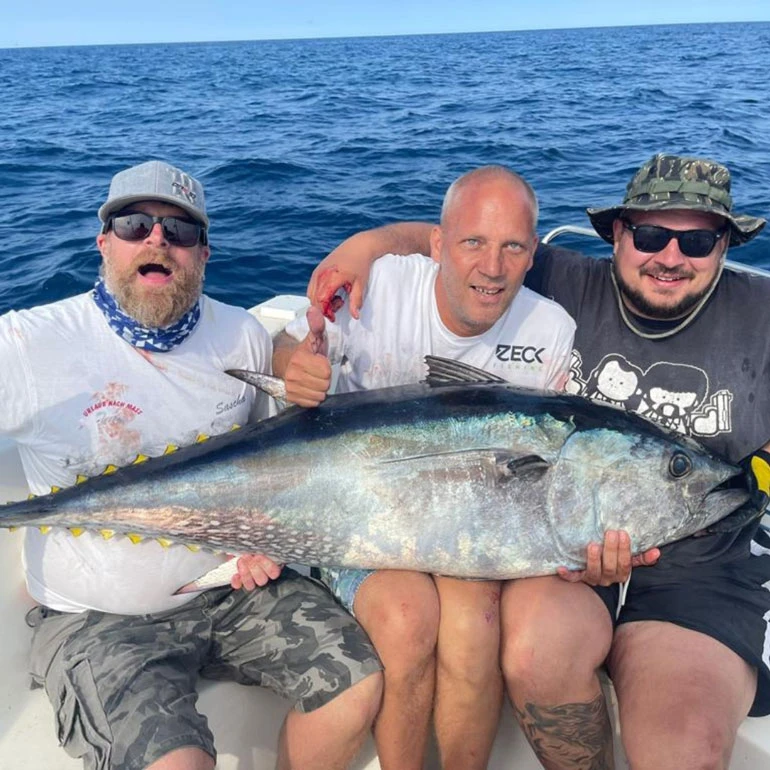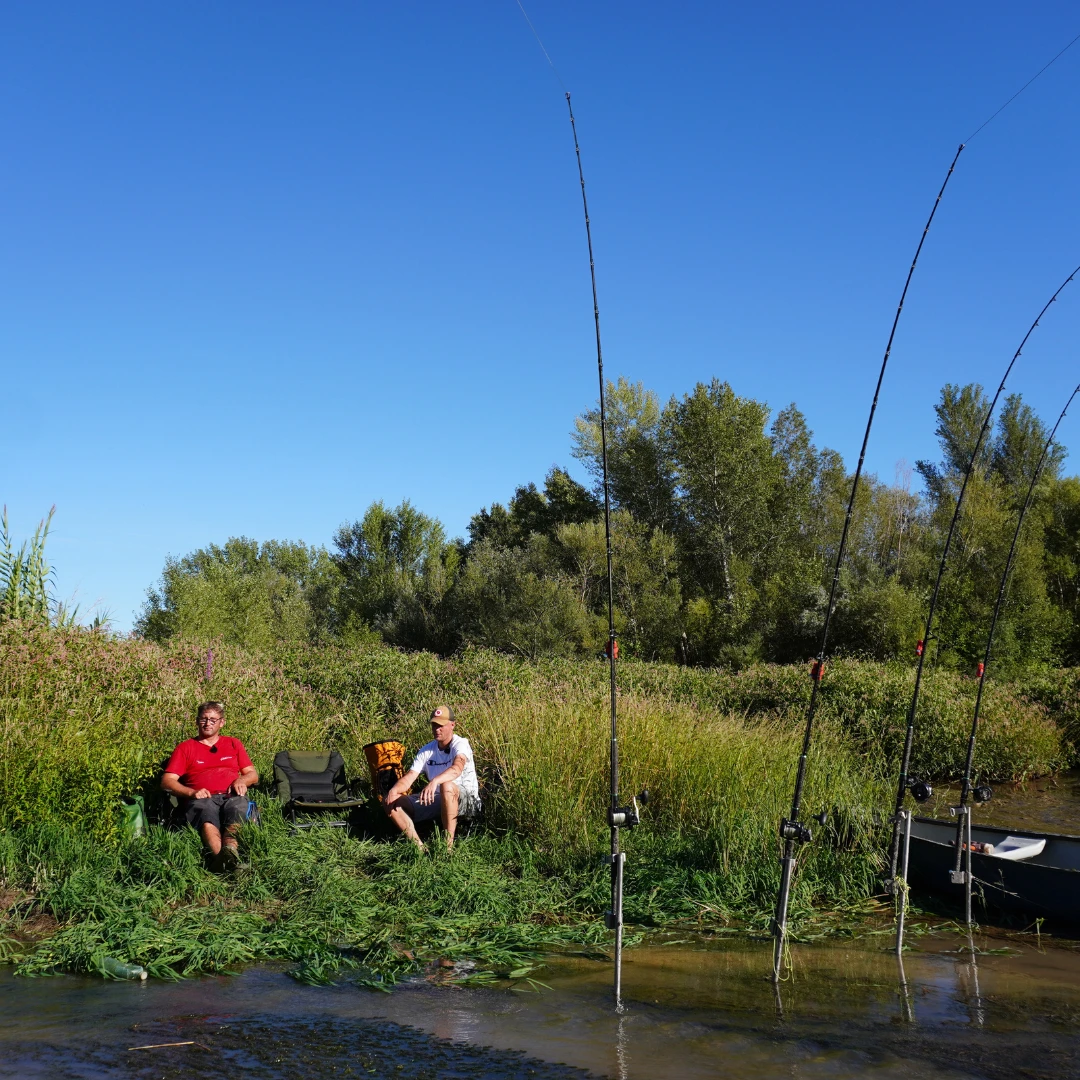
25
Sep
Bass fishing - All you need to know
Inhalt: 1. The Bass & Its Behavior 2. This equipment we recommend for perch fishing 3. Bass fishing hotspots 4. Preferred prey of bass & perch 5. Successful fishing techniques for bass fishing 6. The most effective bass lures
The Bass & Its Behavior
Below, you'll find some information about the perch and its behavior patterns.
Small perch (up to about 30 cm) often travel in large schools and are relatively easy to catch; you just need to locate them. However, as they grow larger, they tend to become more selective, making it harder to catch big perch. Perch often study their prey for an extended period, especially in lakes where they have the time to do so, and then decide whether to strike or not.
Perch like to be provoked or stimulated. The more pressure your bait exerts, the better. Once you've found a school and some of the fish have become interested in your bait, it can trigger a feeding frenzy among the rest of the fish. It's not uncommon for numerous perch to follow your hooked fish. But what should you pay attention to in order to achieve this?
This equipment we recommend for bass fishing
One advantage of perch fishing is that you rarely need bait over 25g, so your perch setup can be kept simple.
Fishing rods for bass fishing
If we were to give a general recommendation for a rod, it would be a light rod with a casting weight of 8-24g and a length of 210-270cm. If you're fishing from the shore, opt for a rod length of 240 cm or longer, and if you're mostly fishing from a boat, choose shorter rods under 240 cm for better on-board handling. This rule also applies to gear like belly boats or kayaks. Regarding the rod's action, a light tip action should ensure precise bite detection. In other words, the tip should be finer and more sensitive compared to the rest of the rod. This helps you detect even subtle perch nibbles.
You'll typically find this action labeled as "Fast" with most rod manufacturers. "Extra fast" rods, which are generally stiffer, including at the tip, can be particularly suitable for heavy jigging in fast-flowing waters like the Rhine. If you fish in lakes frequently, "UL" (Ultra Light) rods are also a fun alternative. Ultra-light rods are characterized by a very fine and thin blank with casting weights of usually no more than 10g. The enjoyment of battling perch is guaranteed, even with smaller fish. So, stick to the guideline of 210-270cm rod length and 8-24g casting weight, and adjust your rod choice within this range to suit your needs.
Fishing reels for bass fishing
The topic of reels for perch fishing is quite straightforward. Don't overcomplicate it. Almost any reel is suitable for perch fishing. Choose reels in the size range of 1000 to 3000, and you'll be well-equipped. The crucial recommendation we have is to ensure that your reel has a finely adjustable drag. Especially when you have a large perch (let's say 35 cm or larger) on the line, your reel should release the line smoothly when the fish tries to escape. As long as this feature is present, you're in good shape. In this post, we won't list the universally valid attributes of a good fishing reel, such as clean line lay or smooth operation.
Other Equipment
If you're exclusively targeting perch, a 0.10mm braided mainline and a 25lb fluorocarbon leader will suffice. You'll also need a snap, and your optimal perch setup is complete.
Bass fishing hotspots
Locating perch in your specific type of water body is both simple and complicated. Why simple? When perch fishing, it's even more crucial to find water structures than when targeting pike or zander. While you might find large pike or zander in mid-water, perch are unlikely to be there.
But why is it simultaneously complicated to find them? The seemingly endless array of promising spots can be overwhelming. Perch can be found in weed beds, near wood structures, at mussel banks, along steep drop-offs, near underwater hills, in harbors by sheet piling, under bridges, in eroded back-currents, and among stone piles, to name just a few. As you can see, these are all locations that have something in common: they offer something more than open water or a monotonous lake bed. Naturally, perch are not there by chance but exclusively because of the abundant food supply at these locations. What does structure offer to small prey fish? Correct, hiding spots. Find them, and you'll find the perch.
Our recommendation: Fish as many of these spots as possible until you get bites or even catches, and then thoroughly work that spot. Because where there's one perch, there are almost always more.
Preferred prey of bass and perch
"Find the prey, and you'll find the perch," as mentioned earlier. But what does a perch actually eat?
They prefer to feed on small fish between 4-10cm. Consequently, soft plastic lures or baitfish in the 8cm size range are the most common choices for perch fishing. For really large specimens (around 40cm or larger), you can go for 10-12cm lures. It's not without reason that many anglers catch large perch as bycatch when fishing for zander. However, the most commonly recommended and favored size is typically 8cm.
In addition to fish, perch also enjoy consuming crayfish if they are present in the water body. Based on this knowledge, rubber crayfish and crayfish-like imitations are top-notch lures. Here's a tip: In winter, big perch often congregate in shallow areas that are slightly warmed by the sun and go crazy for slowly "dragged" rubber crayfish. This works best with the Carolina Rig, but more on the methods later.
Now, let's talk about the most well-known perch bait: the earthworm. There seems to be something about these worms that magically attracts perch. Moreover, there's hardly a more versatile bait. Whether actively on the drop shot, on the bottom, or passively with a float, using earthworms will guarantee perch catches.
Successful fishing techniques for bass fishing
Fishing techniques are a science in themselves. Here's a brief overview.
Classic "Allround" Spinning
This encompasses conventional jigging with soft plastic lures, twitching of crankbaits, and spinning of spinners. Classic jigging and reeling is a time-tested method that works reliably. If you want a dependable approach, this will certainly catch your fish. However, there are days when perch don't seem to be in the mood for it, and that's where the Dropshot system comes in. With the Dropshot rig, you can dance your bait just above the bottom in the same spot for minutes. Sometimes, fish seem to respond better to this than jigging. You should always carry Dropshot tackle for perch fishing, either to try on challenging days or as your preferred technique – it works wonderfully.
The next two common techniques are quite similar but have slight differences: the Carolina Rig and the Texas Rig. Both systems separate weight from the bait. In the Texas Rig, the weight is directly in front of the bait, while in the Carolina Rig, the weight is a good distance in front of the bait. Both systems allow for easy suction of the bait. The small but significant difference: with the Carolina Rig, the bait sinks almost weightlessly much slower after the weight has already touched the bottom of the water. The Texas Rig sinks much faster, allowing for a quicker bait presentation. Both systems work well, with the Carolina Rig being particularly effective
in combination with rubber crayfish, as mentioned earlier. However, we recommend starting with traditional methods like jigging or reeling in "Search Baits," especially if you're not familiar with the water body.
Lastly, bottom fishing and float fishing should not be forgotten. These methods still have their rightful place in perch fishing and reliably catch perch. Here, earthworms, redworms, small baitfish, or even maggots can lead to good perch catches.
The most effective bass lures
When it comes to artificial lures, the options seem endless. Every year, it feels like 80 new lures hit the market, each promising incredible catches. In the following, we'll limit the selection to the seven most common lures.
1. Metal Spinner
The classic lure for perch fishing. Spinners worked in the past and continue to work very well today.
2. Crankbaits
Crankbaits are also highly popular for perch. Once again, consider the sizes of the prey fish in the 4-10cm range. We recommend twitchbaits, which open outward.
3. Stickbaits
Surface lures are a delight for perch, especially during the warm season. Stickbaits with the typical "walk the dog" action are perfect. Plus, there's nothing quite like a topwater strike, right?
4. Chatterbaits
This spinner, rubber, and jig combination hasn't been around for long, but it catches perch like crazy, especially large ones. Every perch angler should have these in their tackle box. Pro tip: Present them very slowly over shallow weed beds.
5. Spinnerbaits
Spinnerbaits combine everything that drives perch crazy: pressure, vibrations, and flashes. They can't resist this sensory overload.
6. Creature Baits and Rubber Crayfish
As mentioned earlier, crayfish are high on the menu, and so are rubber imitations of worms, larvae, etc. Make sure to carry a handful of these lures with you.
7. Spin-Jigs
These long-casting wonders and highly pressurized lures are traditionally known as "search baits." You can quickly cover large stretches of water in search of perch. And not only are you searching, perch also love these lures. So, you can continue fishing with them after locating the fish.
In conclusion, perch fishing is incredibly fun, and as a food fish, perch are delicious. Follow the guidelines we've provided, pack a small box of lures mentioned above, head out, and see for yourself. Don't be fooled into thinking you need 328 lures to catch your fish. Instead, spend time on the water, learn to locate and understand the fish. Enjoy perch fishing!
If you want to refine your techniques for catching perch or prefer to learn tips and tricks directly from the pros, you can find all our perch fishing guides here."
